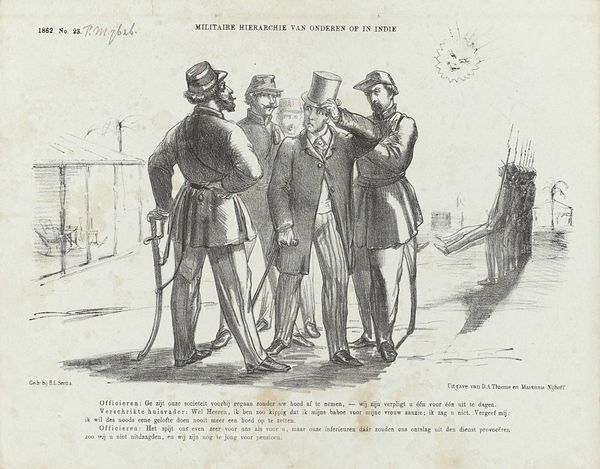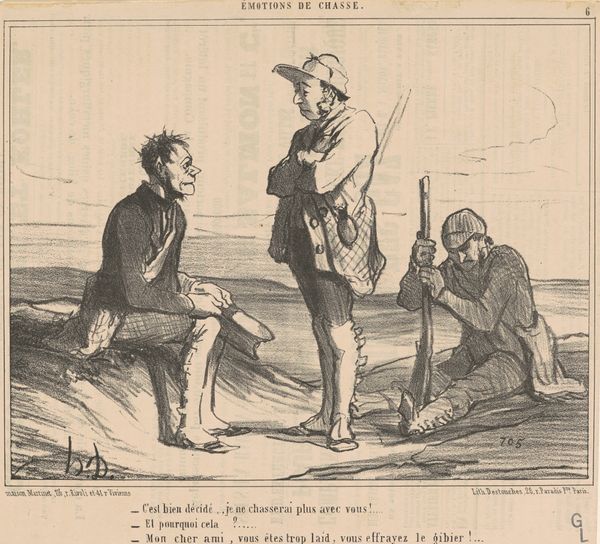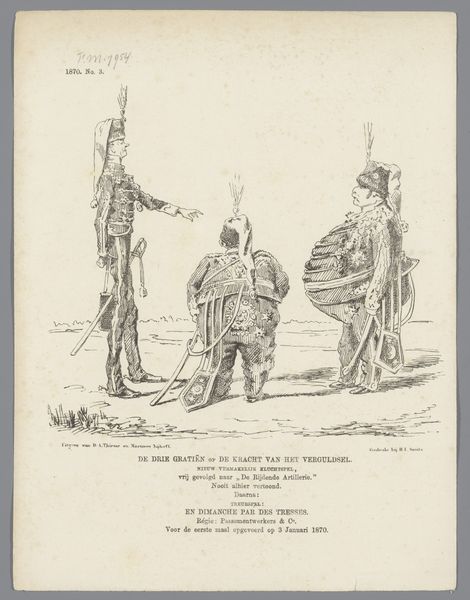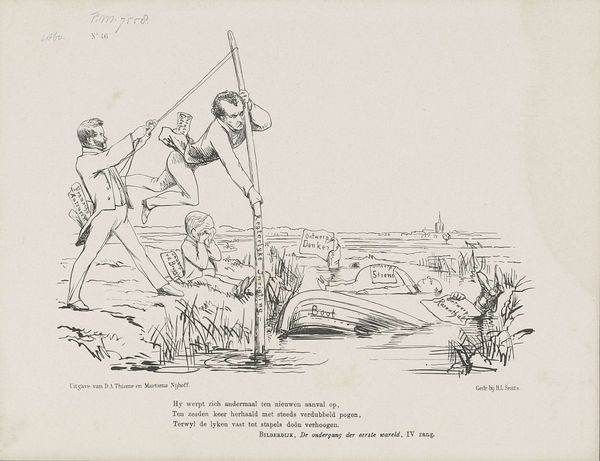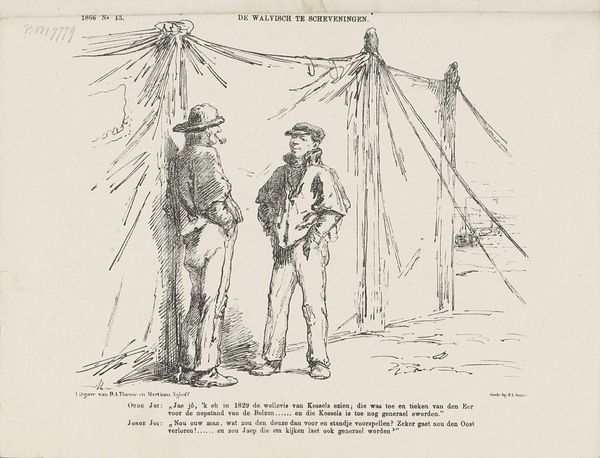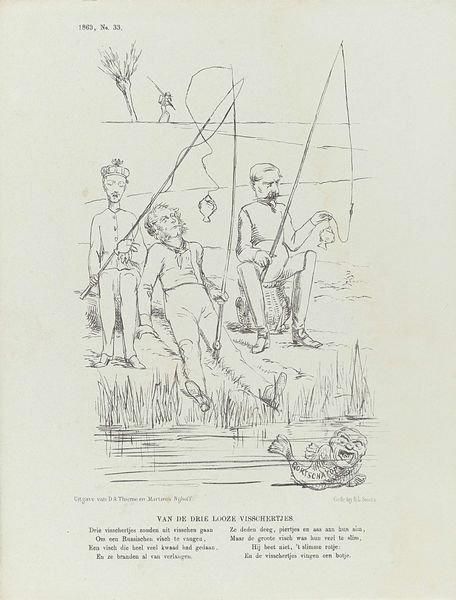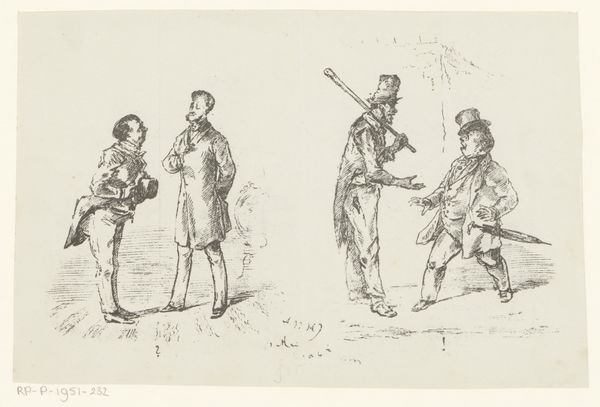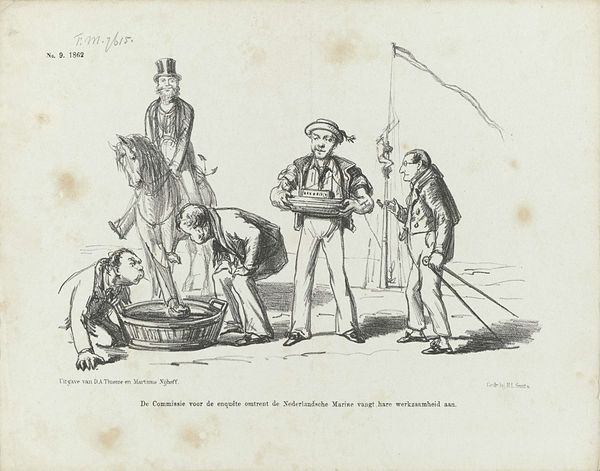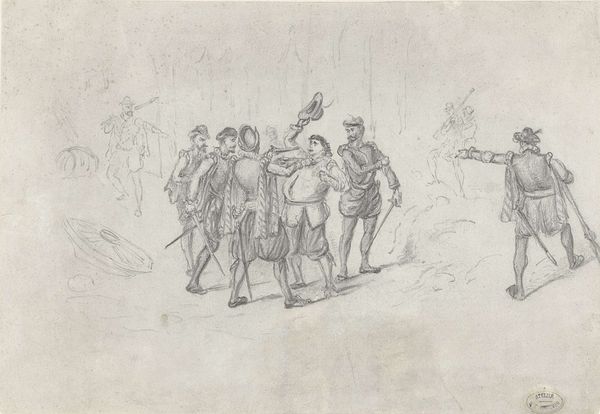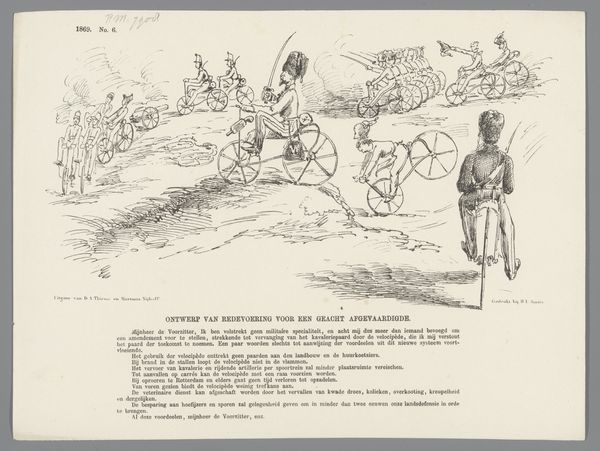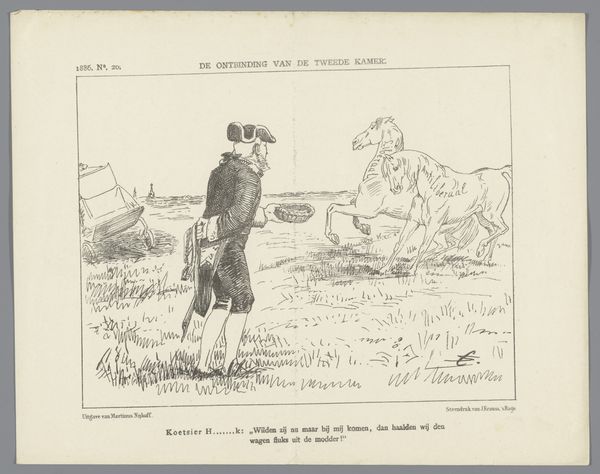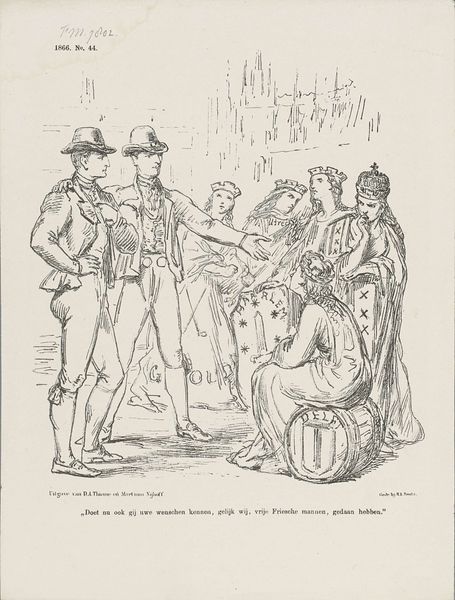
Spotprent op de slechte toestand van de nationale defensie, 1866 1866
0:00
0:00
drawing, print, pen
#
drawing
#
comic strip sketch
#
quirky sketch
#
dutch-golden-age
# print
#
caricature
#
sketch book
#
personal sketchbook
#
idea generation sketch
#
sketchwork
#
comic
#
sketchbook drawing
#
pen
#
genre-painting
#
history-painting
#
storyboard and sketchbook work
#
sketchbook art
#
realism
#
initial sketch
Dimensions: height 215 mm, width 275 mm
Copyright: Rijks Museum: Open Domain
Editor: This is a drawing from 1866 by Johan Michaël Schmidt Crans called "Spotprent op de slechte toestand van de nationale defensie," which translates to "Cartoon on the Poor State of National Defence". It seems like a commentary on the military, rendered in a somewhat comical style with pen and ink. What story do you think this artwork is telling? Curator: This piece, while seemingly simple, is steeped in political and social critique. Consider the historical context: 1866. What major shifts were occurring in Europe? What emerging tensions might have impacted national defense strategies? Editor: I guess there were several wars brewing around this period in Europe, so maybe it’s pointing out that the Netherlands wasn’t really prepared for conflict? Curator: Precisely! The caricature style mocks the figures of authority, reducing them to these almost pathetic characters. Notice the body language, the expressions... how might those physical depictions speak to broader anxieties about national strength and identity? Where does the artist position blame? Editor: I see what you mean. The artist isn't just making fun, they're using humor to make a serious statement about governmental failure, it almost feels like calling out those in charge for their ineptitude. Curator: Exactly. Art like this serves as a vital historical document, giving us insight into the public sentiment. Political cartoons and caricatures often have the power to sway public opinion and encourage people to act. How might something like this have been received back in 1866, considering all of this? Editor: I imagine it was controversial! But probably it sparked discussions, or even fueled social change through satire. I’d never thought of cartoons this way before. Curator: Hopefully you'll remember from this context to also ask about current "fun" or "innocent" visual content too!
Comments
No comments
Be the first to comment and join the conversation on the ultimate creative platform.

